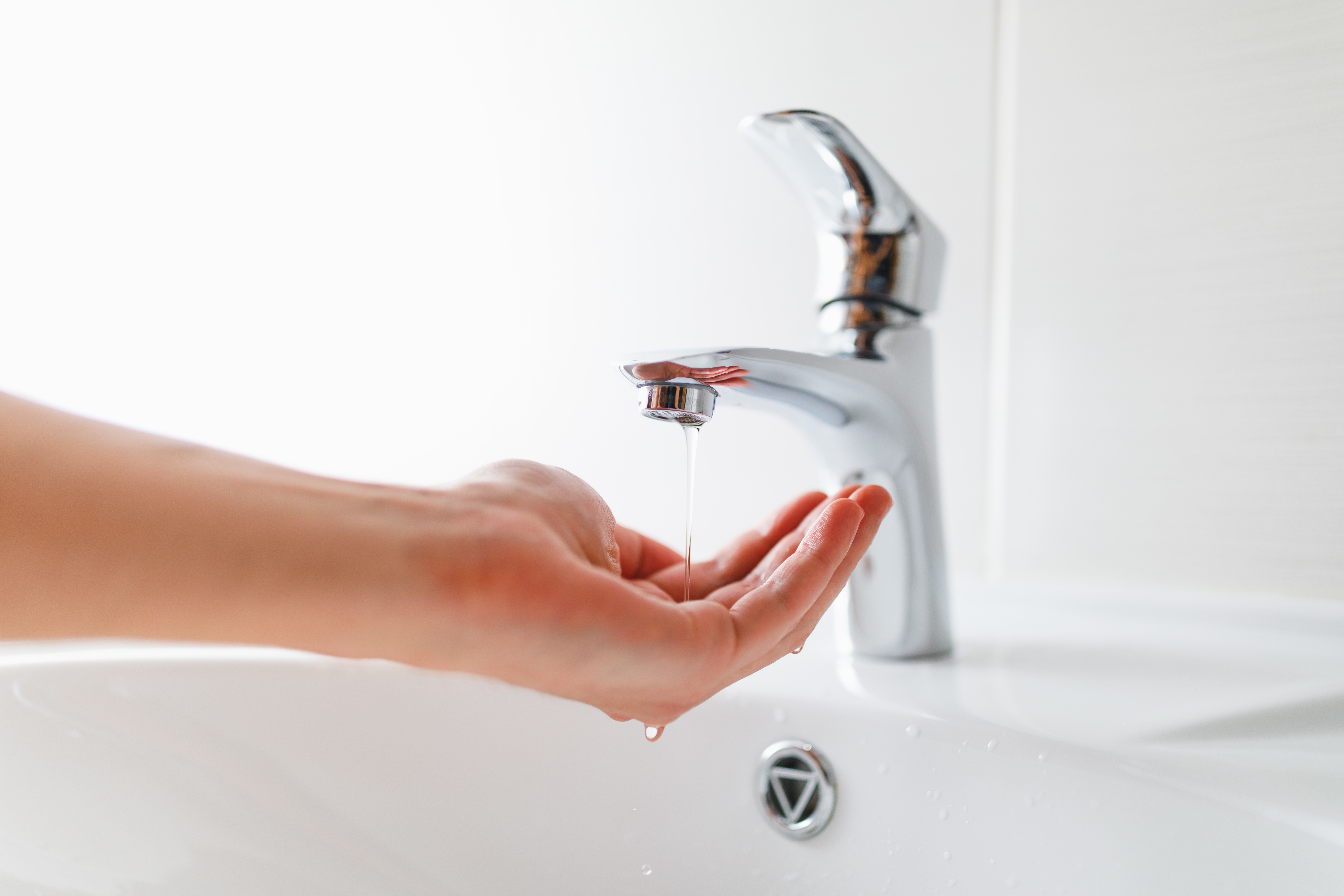 (412) 364-9114
(412) 364-9114

We’ve all been there. The sink practically dribbles while rinsing dishes or the shower just isn’t up to snuff. Low water pressure is a headache to contend with, especially when you have stuff to get done. So why does this even happen? We’ll look at some of the most common causes of low water pressure and how to fix each issue.
Water valves control the flow of water through your plumbing system, including water pressure. There are two primary valves that bear the brunt of this responsibility: the water meter valve and the main shutoff valve. Each of these should be completely open/on for maximum efficiency. Partially or fully turning off either valve impedes water pressure, but failing to fully reopen one or both after a repair is one of the common causes of low water pressure.
Water Meter Valve – Located at the water meter, either in or outside of your home, the water meter valve is generally easy to see, but not always accessible. Start by opening the box to see if the valve is fully open. Depending on your location, city employees might be the only ones able to access it to actually make the repair.
Main Shutoff Valve – Located in the house near where the supply pipe enters your home, the main shutoff valve makes it easy to turn your water completely on or off. There are two types: a gate valve with a wheel-like handle or ball valve with a lever handle. Main shutoff valves often get left in the off/closed position after minor repairs, but are super easy to access. For gate valves, turn the wheel fully counterclockwise, or for ball valves, turn the level parallel to pipe to allow water to flow freely.
Tired and worn-out pipes spell trouble for adequate water pressure. This is especially true of popular galvanized steel piping, which has a tendency to rust and collect debris over time. With gunky buildup in the way, how is your water supposed to get through?
Clogs and Corrosion – The extent of the damage can vary dramatically, but clogs and pipe corrosion are not laughing matters regardless. Over time, rust, mineral deposits and debris build up inside of pipes, restricting water flow. Because it happens slowly, it might remain unnoticed for some time. Unfortunately, it’s not something to fix on your own, especially if the damage affects a significant portion of the system. Professionals like the team at Terry’s will assess the issue and unclog small portions or replace larger sections of pipe with longer-lasting copper or plastic piping.
The pressure regulator is a bell-shaped control valve found in some homes. The regulator intentionally reduces the pressure in plumbing systems to limit pipe damage. If there is a regulator malfunction, look out for the extremes: seriously high or low water pressure.
A sign of a healthy water system is being able to adjust pressure from low to medium to high pressure. Pressure regulator issues are present when there’s no middle ground, and the issue affects all fixtures quickly. As a first step, test the regulator by attaching a water pressure gauge to the spigot nearest to water main or regulator. If it reads below 52-75 psi, the regulator is probably failing. Be sure to turn off the water meter valve to replace the regulator.
Big and small issues alike affect water water pressure in your home. The important thing is to properly identify the major causes of low water pressure and execute the repair. Give our team a call to replace inefficient and corroded plumbing.